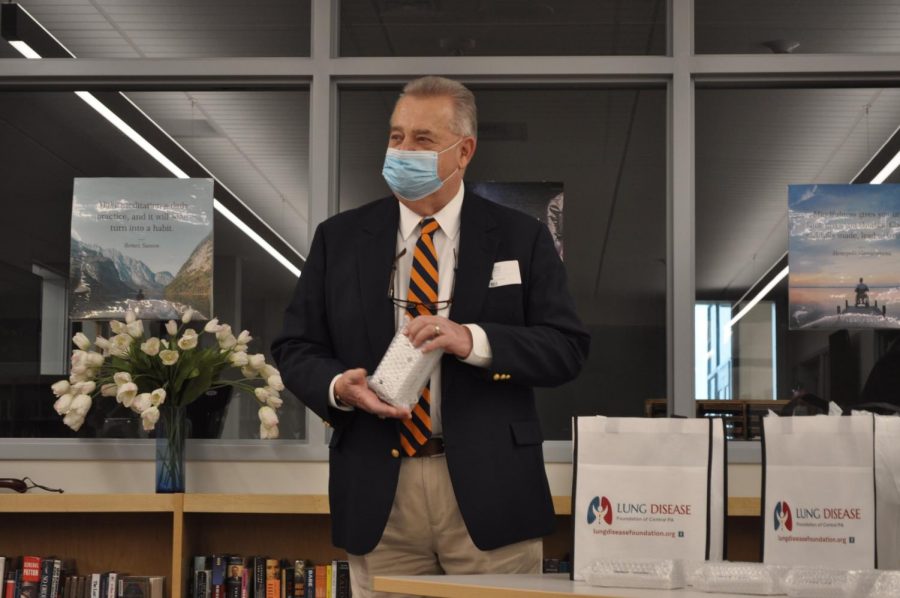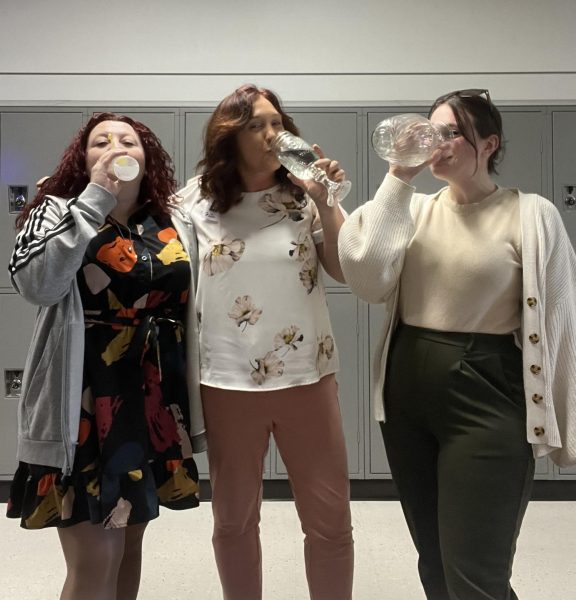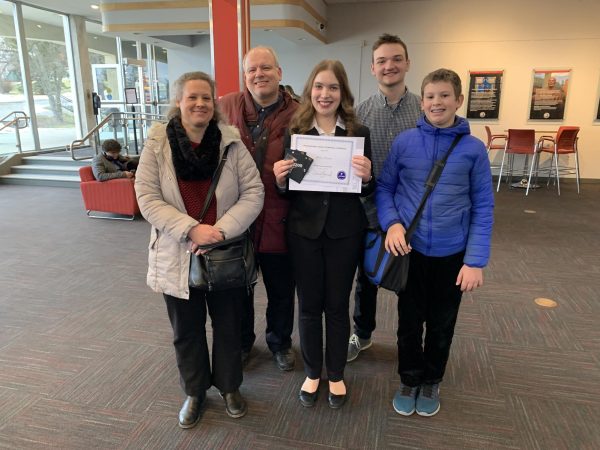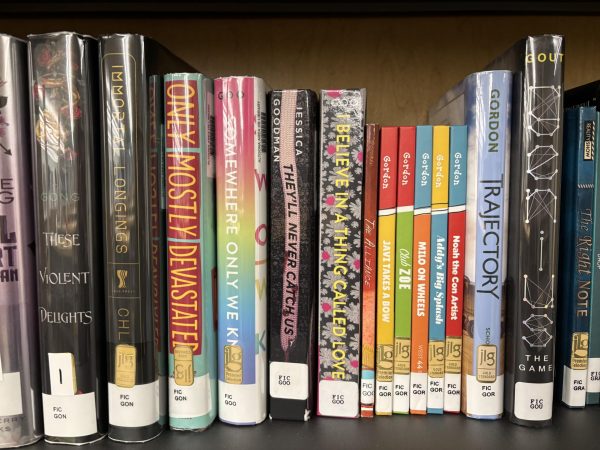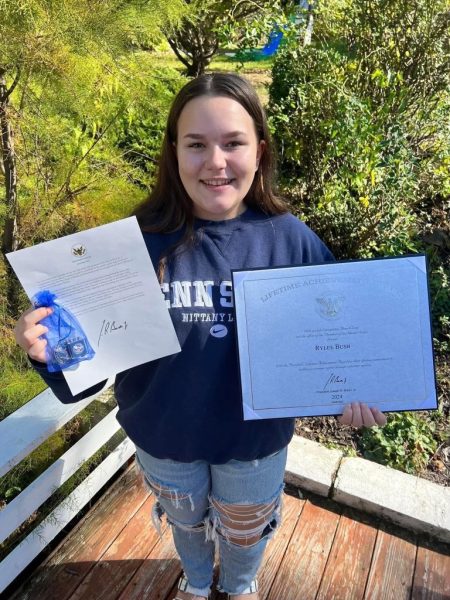New vape sensors installed throughout school to discourage teens from vaping
Despite the pandemic and virtual learning, Altoona is facing an ongoing problem with students vaping throughout the high school. As this problem worsens, the school has tried various ways to prevent this student behavior.
“Vaping is one of the most frequent violations at the high school. We do random metal detector checks, and we do searches on a regular basis. The most frequent paraphernalia that we find are e-cigarettes and vapes,” assistant superintendent Brad Hatch said.
Because of this increase in teenage usage, the high school decided to act by communicating with UPMC and the Lung Disease Foundation of Central Pa. in order to make some changes.
The founder of the Lung Disease Foundation of Central Pa., George M. Zlupko, MD, helped Altoona by presenting the school with 30 vape sensors that will be placed throughout the school.
For Zlupko, this is an issue that has long been overlooked and these sensors are a step in the right direction.
“The word for…the last two years is pandemic. The COVID-19 pandemic. That plus all the political stuff that’s been going on has kind of wiped vaping right off the map. We don’t talk about it anymore, we don’t hear about it much anymore in the press but it remains as kind of a secondary pandemic,” Zlupko said.
Zlupko led a presentation on Wednesday, April 14, where he presented the 30 vape sensors and talked with students in the library. Zlupko founded the Lung Disease Center of Central Pa. in 2011 and is the senior partner and founder of Altoona Lung Specialists.
What the vape sensors do and how they work
According to Hatch, these 30 vapes sensors will be placed throughout the school in various places. Vape sensors will be placed in every bathroom, every locker room space and any large area where students may be.
These vape sensors are similar to smoke detectors. The sensors are able to detect chemical changes in the air like THC smoke, which is the smoke released from vapes. When the sensor detects this change in air quality, it alerts school officials either through email or text.
The cost for the school district for the 30 vape sensors was around $20,000 in total.
Because the sensors aren’t inexpensive, the Lung Disease Foundation has to find schools that are willing to help them with funding. However, this presentation wasn’t Zlupko’s first; Zlupko has visited many schools, but this is the second one he and his team were able to provide vape sensors for.
Sherri Stayer is the executive director of the Lung Disease Foundation of Central Pa. and was also present at the school.
“We’ve been educating in a lot of schools. This is the second school we have been able to raise the funding to provide the vape sensors for. So Hollidaysburg has them, and now Altoona has them,” Stayer said.
How the sensors will help decrease the usage of vapes
The whole idea of the sensors is to decrease the usage of vapes with teenagers. If students can’t vape during school, then hopefully, this would deter them from doing so outside of school as well.
“We’re hoping that this [vape sensors installation] encourages students to at least not bring it to school and maybe curtail their interest in engaging with this at all for their own health,” Hatch said.
Even if a student has difficulty quitting, these sensors may be an opportunity for them to get the help they need.
“…this is not a habit that you want to acquire. These vaping sensors just amplify that fact that we are serious about this [and] that we want you to be aware of this. Hopefully, [we] get some folks to think more seriously about giving up this habit if they can, and if they can’t, to try and get some help to do that,” Zlupko said.
Virtual schooling and the pandemic have made it difficult for the Lung Disease Foundation to see any noticeable progress with the vape sensors and students to this point.
“I think [vape sensors decrease vape usage] and help the process, but the downfall has been that we have done this right before COVID-19. We haven’t had true feedback yet because of COVID-19 [and] with students in school and out of school with virtual,” Stayer said.
When Zlupko talked with the students, he spoke of his experience with seeing patients harmed by long-term effects of smoking, making comparisons between cigarettes and vapes.
“These 50 year olds who come to me with terrible lung disease because they smoked…They were teenagers at one time and thought, ‘this will never happen to me. I’m going to smoke, and I’ll just give it up whenever I want to.’ Three or four decades later, they’re in my office, coughing, short of breath, wheezing…and continuing to smoke even when we tell them what terrible lung disease they have and what’s going to happen to them and how it’s going to affect them. They continue to smoke. Why? Why do they continue to smoke? Well, they continue to smoke because they are addicted. Nicotine is the addictive substance. When you vape…a pod for example has more nicotine in it than a pack of cigarettes. It does. And it only takes a couple pods and you’re hooked,” Zlupko said.
Regarding the future of these vape sensors, if things go as planned, Hatch may implement these sensors in the junior high school.
“Depending on how things go here, we would like to put together a plan to implement the junior high school as well because the [vaping] problem is not exclusive to high school. Kids are starting younger and younger, and we do feel that the junior high school students will benefit from this as well. Because if we get them then, hopefully they won’t develop that habit and continue into high school,” Hatch said.
Zlupko agrees with this idea, especially considering the usage of vapes is increasing within the teenage population.
“We’ve given talks to other groups, mostly adult groups, but we’ve tried to get this message into the teenage population because that’s really where the focus is. When you pick up a habit like this that’s addictive early in your life, it’s much harder to get rid of, whether it’s vaping, smoking, anything,” Zlupko said.
Zlupko and his team plan on attending other schools throughout the county, and if they can, receive the funding to implement more vape sensors.
Zlupko concluded his speech to the students by clearly stating his wishes for the students to take care of themselves so they won’t face any consequences in the future.
“…remember: don’t lie to yourself. There are some facts about this. You want to understand them and want to do the best you can because someday you’ll be 50 and older and I won’t be around, but my partners may be around. We don’t want you to come to the office. We don’t want you there,” Zlupko said.

I’m Sydney Wilfong, a senior at AAHS. I’m part of the band as a proud tenor saxophone player. On the days I have time, I enjoy writing, reading and...



